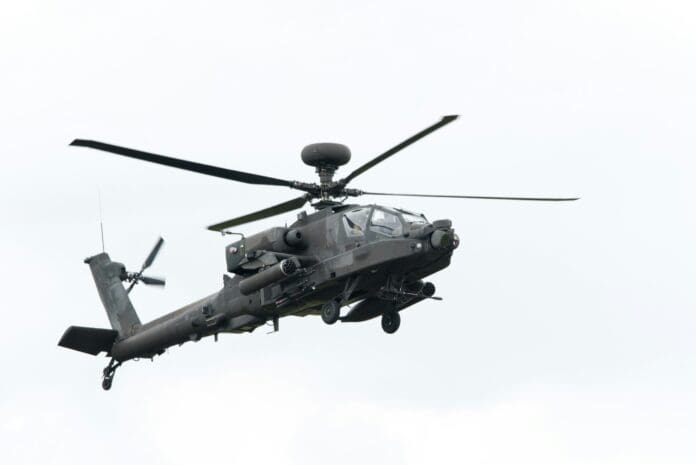This post is also available in:
 עברית (Hebrew)
עברית (Hebrew)
Training attack helicopter crews for modern threat environments has traditionally required large training areas, multiple aircraft, and complex coordination. Even then, it is difficult to replicate the behavior of advanced adversaries or rehearse high-risk scenarios without exposing crews to real danger. A new augmented reality capability is aiming to change that by bringing simulated opponents directly into the cockpit.
Red 6 has integrated its Advanced Tactical Augmented Reality System (ATARS) into Boeing’s AH-64E Apache testbed, marking the first time an AR system has been paired with a military rotorcraft. The technology overlays virtual aircraft, ground threats, and mission elements onto the real world as the helicopter flies. Instead of training exclusively in restricted airspace or relying on scripted simulations, crews can now encounter dynamic, near-peer threat scenarios during routine flights.
According to NextGenDefense, the system works by blending sensor data with computer-generated imagery, ensuring that virtual adversaries appear in correct positions and behave realistically relative to the aircraft’s movement. Because the threats are digital, pilots can train repeatedly without the cost, scheduling constraints, or risk associated with live adversary aircraft. it also records flight and engagement data, giving instructors an objective view of performance for later analysis.
For defense forces, the technology has potential beyond individual pilot training. AR-based overlays could support collaborative combat aircraft (CCA) development, allowing crews to practice teaming with unmanned systems or coordinating against swarming threats. It also enables distributed training across multiple aircraft types without requiring extensive airspace or additional assets.
The integration expands the system’s previous AR work with fixed-wing platforms such as the T-7A trainer. By proving that the technology can function in the more vibration-prone, fast-moving environment of a rotorcraft cockpit, the system opens the door to broader use across attack, utility, and reconnaissance helicopter fleets.
As militaries look for ways to increase readiness while reducing training costs, AR systems like this offer a middle ground between simulators and full-scale live exercises. By embedding advanced training tools inside operational aircraft, armies can expose crews to complex, data-rich scenarios wherever they fly — without waiting for range time or support aircraft.


























